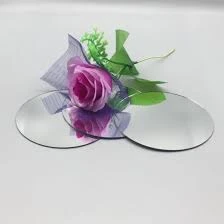

Exploring Float Glass Designs A Blend of Aesthetics and Functionality
Float glass, known for its clarity and smoothness, has become a fundamental element in modern architecture and interior design. Its unique manufacturing process involves floating molten glass on top of molten tin, creating a perfectly flat and even surface. This inherent quality makes float glass an ideal choice for a myriad of applications, ranging from windows and facades to artistic installations and furniture design.
One of the most appealing aspects of float glass is its versatility in design. Architects and designers can manipulate this material to create stunning visual effects while ensuring structural integrity. The transparency of float glass allows for maximum natural light to flow into spaces, enhancing the ambiance and reducing the need for artificial lighting. In contemporary homes and commercial buildings, large-pane glass windows and walls are increasingly common, blurring the lines between indoor and outdoor environments.
Exploring Float Glass Designs A Blend of Aesthetics and Functionality
Another exciting trend in float glass design involves the incorporation of digital printing technologies. Designers can now print intricate patterns, graphics, and images directly onto the glass surface, expanding the creative possibilities exponentially. This innovation facilitates personalized designs that can tell a story or convey a message, making float glass an excellent medium for art installations or custom-powered architectural elements.

Sustainability is also becoming increasingly significant in the world of float glass design. With growing concerns about environmental impact, many manufacturers are turning to recycled materials and energy-efficient production methods. Float glass is inherently recyclable, meaning that it can be melted down and reused without compromising its quality. Designers who prioritize sustainability can specify glass products that contribute to LEED certification or other green building standards.
In considering safety, tempered float glass is gaining popularity for applications where strength and durability are paramount. The tempering process involves heating the glass to high temperatures and then rapidly cooling it, which increases its strength and makes it less likely to shatter when subjected to impact. This feature is particularly important in high-traffic areas, such as commercial buildings or busy public spaces, where safety is a primary concern.
Moreover, advancements in thermal insulation technologies, such as double or triple glazing, enhance energy efficiency. These innovations allow for improved temperature regulation within structures, making float glass a desirable choice for eco-conscious designers who aim to reduce energy consumption.
In conclusion, float glass designs epitomize the intersection of beauty and practicality in modern architecture and design. Its versatility, aesthetic potential, and sustainable characteristics make it an invaluable resource for creative professionals. As technology continues to evolve, the future of float glass promises even more innovative designs, pushing the boundaries of how we perceive and use this remarkable material in our environments. The ongoing exploration of float glass will undoubtedly bring about captivating new forms that inspire and enhance our everyday lives.